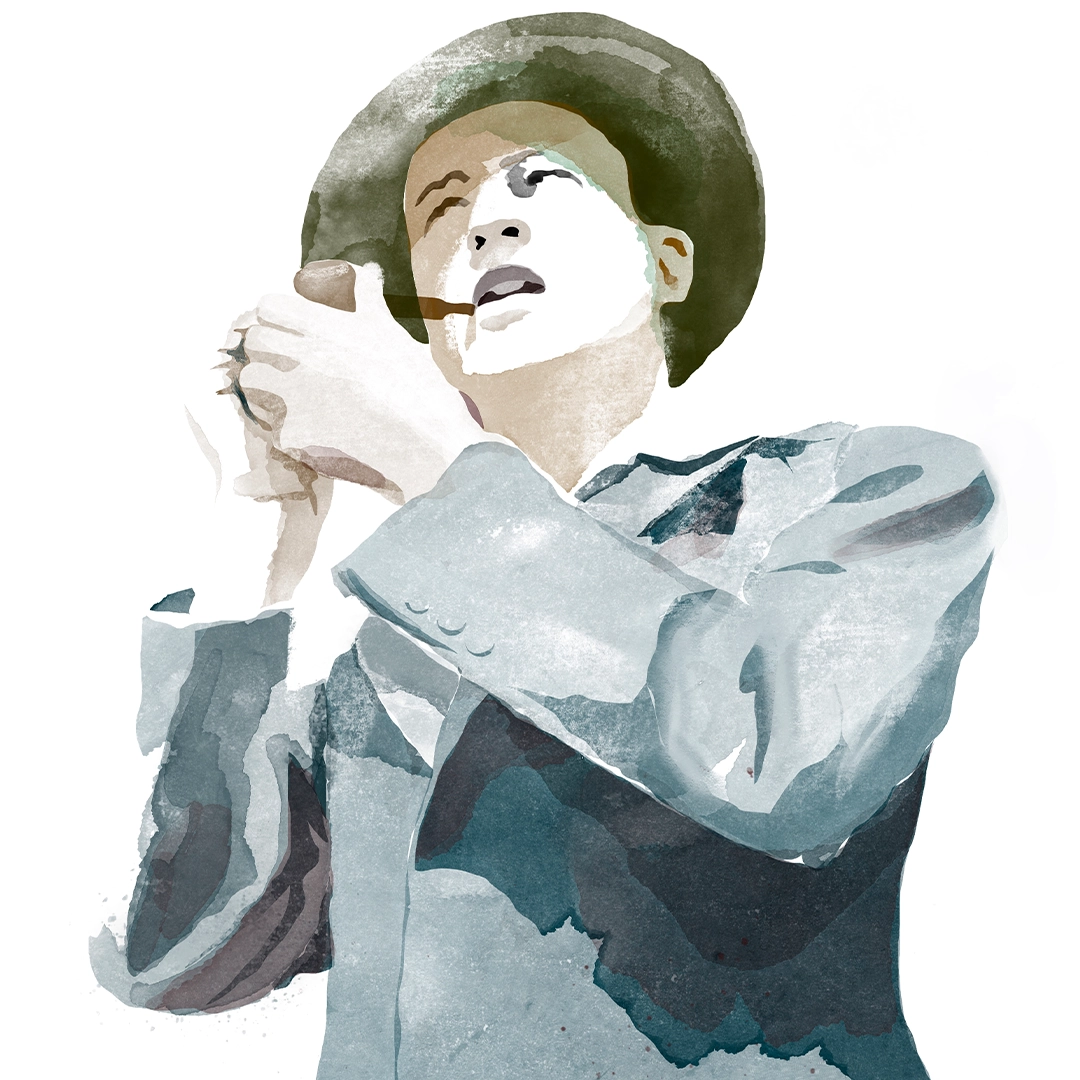by | March 1, 2017
Diane Roberts on Finding Reno
Red pickup truck, white pearls, blue suit. Rediscovering the Miami roots and many accomplishments of the first female U.S. Attorney General

Younger readers may find it hard to believe, but there was a time when Florida was not a national joke, not a place where headlines beginning “Florida Man” never end well, not a state so extravagantly dysfunctional that novelist Carl Hiaasen says he gets his plots from the local news. Before “Floriduh” became a byword for dodgy elections in 2000, before the governor took to denying climate change even as seas rise, before the NRA and their clients in the legislature decided every quasi-sentient resident should be packing heat, Florida used to be admired for its efficient, progressive legislature (I am not making this up) and known for producing intelligent, mature, sober-minded public servants (seriously: I’m not making this up) such as Bob Graham and Janet Reno.
Bob Graham is still with us, thank God, traveling the state touting a reboot of his book, America: The Owner’s Manual, a guide to being an engaged citizen. Alas, Janet Reno died in her Dade County family home just hours before the polls opened on November 8th, 2016. Back then (and damn, it seems a long time ago),
I expected that Hillary Clinton would win the White House. So I was sad that Janet Reno, the first woman to become State Attorney in Florida and the first woman to become Attorney General of the United States, didn’t hang on long enough to see the nation elect its first woman president and enjoy the sound of the broken glass ceiling crashing all around.
However, given that the person my friend and Oh, Florida! author Craig Pittman calls “part-time Florida Man” won instead, perhaps it was better she went when she did. Janet Reno was a full-time Florida Woman, a graduate of Cornell and Harvard Law School who always called Florida home, a firm believer in accepting responsibility, unimpressed by power and pomp, uninterested in wealth and fame. She wasn’t keen on showboaters or big talkers—she liked to say, “I’m not fancy. I am what I appear to be.” Bill Clinton nominated her for the post of attorney general—she was his third choice after his first two admitted to hiring undocumented immigrants as nannies—but she was never a card-carrying Friend of Bill. Born on the edge of the Everglades, her parents, both newspaper journalists, told her there was only one rule: “Tell the truth and don’t cheat.”
She could never make it in today’s political climate.
Reno was hardly perfect. Nobody with a long career in the law avoids mistakes. She’s probably most famous for her worst one, authorizing the FBI’s disastrous 1993 raid on the Branch Davidian compound in Waco, Texas, in which at least 75 people died in a confused maelstrom of bullets and arson. It turns out that the FBI acted on child abuse rumors, bad information and no little paranoia about leader David Koresh’s zeal for hastening the End Times. Reno didn’t make excuses: she went on television and accepted full responsibility. She didn’t make excuses for sending six-year-old Elian Gonzalez back to his father in Cuba, either—not that I would call that decision a mistake, despite the stories of mystical dolphins saving the child from drowning, apparitions of the Virgin Mary and the rage of the Cuban exile community in her home town of Miami. They raged and cursed Reno and Bill Clinton as heartless communist sympathizers, but she knew she had both international and American law on her side. She understood the fierce hatred of Fidel Castro that animated the exiles then and still—though Fidel’s dead—fires them up now, but she took the hissy fits in stride and got on with her job.
After she left Washington in 2001, she decided to run for governor of Florida, even though she’d been diagnosed with Parkinson’s Disease in 1995. She drove all over the state in a red pickup. In some less-friendly rural hamlets, she’d be met by anti-government protestors, people still mad about Waco or Elian Gonzalez and people convinced that UN black helicopters hovered nearby, that the FBI was coming to seize their guns and that she should have prosecuted Bill Clinton for, well, something. She’d make a point of going up to them and shaking their hands. She lost that election, but gained State Treasure status: the Florida Woman who went to Washington came home to stay.
Her Florida childhood was thoroughly eccentric. Her mother, Jane Wood, was a renowned reporter at the Miami News, author of a book called The Hell With Politics; her father, Henry Olaf Rasmussen, was a Danish immigrant who’d changed his last name to “Reno,” imagining that it sounded more authentically American. He was a reporter, too, on the cop beat for the Miami Herald. Back in the 1940s, Miami was a somnolent burg in thrall to Jim Crow, a place where white ladies joined the Garden Club and white men the Ku Klux Klan. Janet, born in 1938, was the eldest child; her brother Robert was next, then sister Maggy and baby Mark. The children ran around barefoot and fearless, a posse of Huck Finns, playing with the peacocks their mother raised, their horses, and the critters, from raccoons and snakes to the donkeys her father got from a man he met once in a bar.
Jane Wood Reno sent her brood to after-school cotillion classes to “civilize” them with lessons on waltzing, deportment and good manners, which they duly learned, but their hearts remained in the ’glades, in the house their mother legendarily built by hand. She hired a professional to pour the slab, her husband helped with some of the heavy lifting and the children learned to lay brick, but beyond that, Jane did most of it—wiring, plumbing, the lot. The house has withstood every hurricane since the late 1940s, though it lost a shingle—one shingle—during big, bad Andrew. The shingle is now nailed to the wall by the kitchen with an inscription: “Andrew, Aug. 24, ’92.”
The house is an inevitable metaphor for Janet Reno: plain, strong, irregular, a rare edifice in a state where pastel iterations of “tropical living” replicate themselves over and over like junk DNA, a metaphor and a monument to an older, kinder, more authentic Florida. Janet was bolstered by Jane, who refused to be afraid: “It might be that some
day I shall be drowned by the sea, or die of pneumonia from sleeping out at night, or be robbed and strangled by strangers. These things happen. Even so, I shall be ahead because of trusting the beach, the night and strangers.”
Her truck was famously red; her best-known outfit was famously blue, a suit of almost defiant dowdiness. Long before Alec Baldwin screwed his face into a puckered orange scowl to lampoon Donald Trump, long before Tina Fey showed us Sarah Palin’s “fancy pageant walkin’,” Will Ferrell wore that blue suit on Saturday Night Live’s “Janet Reno Dance Party” sketch, in which a gangly woman gets down without a hint of rhythm as a bunch of teen hipsters shake what their mamas gave them all around her. Ferrell’s caricature fed the narrative of Reno’s strangeness: she was big, over six feet tall, and not conventionally “sexy” (to men, was the implication, hinting that she might be a lesbian). Reno, who described herself as an “awkward old maid who has a very great attraction to men,” characteristically took it all in good sporting stride, appearing on SNL herself, dressed in frumpy blue, crashing through a wall and doing the jerky dance with Ferrell.
I met her once, at a reception in Tallahassee. It was at the Florida State Law School, hosted in one of the relocated antebellum houses on the main green. She towered over me and pretty much everyone else in the room, male or female. I had on heels, but so did she. She would bend slightly to speak, like one of Tolkien’s ents, the tree-giants in The Lord of the Rings. She wasn’t wearing blue that day, but did have on that string of pearls I’d always found slightly incongruous, strangely girly. On second thought, yeah, I get it. Pearls have long been part of the Washington woman’s uniform, along with the boxy navy blue suit and the patent leather shoes. But pearls on Janet Reno seemed to say that she might be a badass lawyer, a feminist icon, but also a Southern Lady. Not some sugar-voiced sorority girl stereotype, but one of those tough characters William Faulkner loved to write about, the ones who’d face down a lynch mob, then serenely go back to pruning their Souvenir de la Malmaison roses. Janet Reno, raised in what now may be a suburb of Miami but was then wild land, was the kind of Southern Lady who could behead a cottonmouth with a shovel, take her boat out and catch a gag grouper (then gut it herself), and handle a bunch of hostile senators during a 12-hour hearing. The Florida that made Janet Reno is mostly gone. I mourn that Florida—and her.
READ MORE FROM FLAMINGO COLUMNIST DIANE ROBERTS.
About the Author
Diane is an eighth-generation Floridian, educated at Florida State University and Oxford University. Her work has appeared in The New York Times, The Guardian and the Tampa Bay Times. She has also authored four books, including “Dream State,” a historical memoir of Florida.





